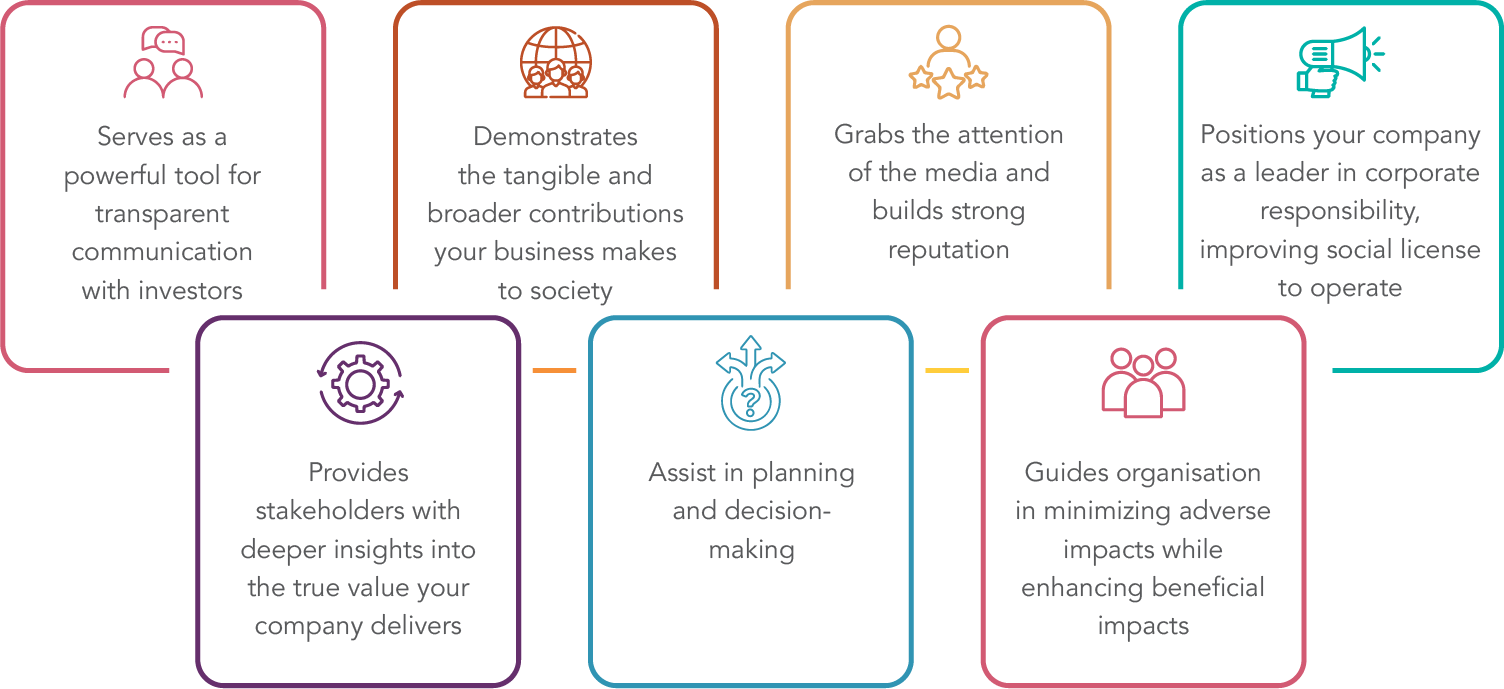Why do you need an ESIA?

An Economic and Social Impact Assessment (ESIA) is a comprehensive evaluation that measures the total economic, environmental, and social impacts of a company's operations.
By analyzing three key channels - Direct, Indirect, and Induced, ESIA captures the full scope of your business’s contribution, including its impact on valued socio-economic components.
Access to 580 million+ business records across 250+ countries, ensuring detailed impact measurement
Covering nearly 80 million public and private entities in over 50 markets including nearly 2 million entities in India
Companies of all sizes worldwide trust Dun & Bradstreet to support their business growth and safeguard their success
Economic and Social Impact Assessment (ESIA) is a comprehensive, data-driven methodology used to evaluate the economic and social contributions of a business, project, event, or industry sector. ESIA helps organizations and stakeholders measure and communicate their broader impact by quantifying:
By leveraging ESIA, companies can demonstrate their value beyond financial performance, aligning with sustainability goals, ESG (Environmental, Social, and Governance) metrics, and stakeholder expectations.
Implementing Economic and Social Impact Assessment (ESIA) empowers organizations to:
By leveraging ESIA, businesses can effectively communicate their broader impact, meet regulatory and investor expectations, and drive strategic decision-making.
While Environmental Impact Assessment (EIA) focuses solely on evaluating the ecological and environmental effects of a project or business activity, Economic and Social Impact Assessment (ESIA), as offered by Dun & Bradstreet (D&B) provides a broader perspective by analyzing the economic and social impact. ESIA measures contributions to GDP, employment, income generation, community development, and social well-being, helping organizations demonstrate their value beyond environmental considerations.
Dun & Bradstreet’s ESIA is a powerful tool designed to help a wide range of stakeholder’s measure and communicate their economic and social contributions. It is especially relevant for:
By leveraging ESIA, these organizations can enhance transparency, build stakeholder trust, and support strategic decision-making with data-driven insights.
Dun & Bradstreet’s Economic and Social Impact Assessment (ESIA) evaluates essential economic indicators that help organizations measure and communicate their contribution to the economy. These indicators include:
These indicators provide a robust foundation for organizations to align with ESG goals, support policy advocacy, and demonstrate sustainable economic impact to stakeholders.
Dun & Bradstreet’s Economic and Social Impact Assessment (ESIA) evaluates critical social impact indicators to help organizations understand and communicate their contributions to society. These include:
By analyzing these social dimensions, ESIA helps businesses align with ESG frameworks, strengthen community relationships, and demonstrate their role in driving sustainable and inclusive development.
Not necessarily. Economic and Social Impact Assessment (ESIA) requirements can vary significantly across different geographies, industries, and regulatory environments. Recognizing this diversity, Dun & Bradstreet’s ESIA approach is designed to align with global best practices and internationally recognized frameworks, while being customized to the Indian context.
This tailored methodology ensures that ESIA remains relevant and actionable for domestic stakeholders, including corporates, government bodies, and industry associations, while maintaining global credibility for international partners and investors.
Activate data and analytics to control supply chain risk and avoid the consequences of disruption. Learn more about our supply chain solutions.
Assess, investigate and monitor third parties for potential risk. Learn more about our compliance solutions.
Gain your stakeholders confidence for increased business opportunities and establish your brand credibility.